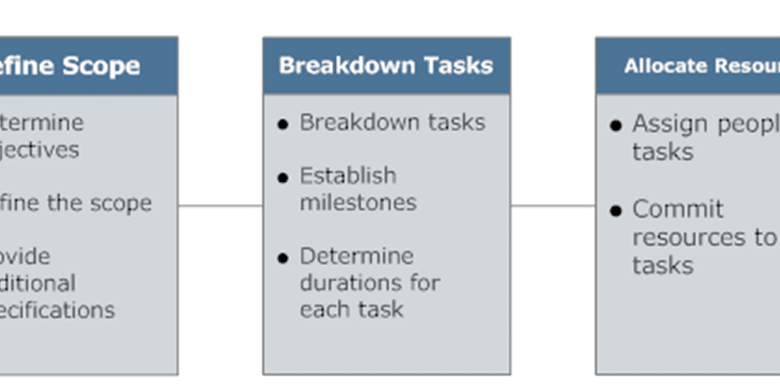Project Planning – Common Steps

Project Planning
Considering the immense importance of project planning in Project management, it is very important that it should be done right and in the optimal manner. This is because the implementation of the project is completely dependent on the planning phase and the degree of accuracy and success of the project plan will determine whether or not the project is going to be successful. So, ultimately the success of the project depends on the planning phase and hence, it is important to carry out this phase following the best practice and fulfilling all the steps that are essential to this stage.
Project Planning – Define the Problem
Before beginning with the planning of the project, the first and foremost of the steps is to see what is the problem that the project is going to solve. Defining the problem and how the project is the solution is important so as to know the problem or part of it, for which the project is being started. In this manner, by the end of the planning and during the implementation, the project manager can see the extent to which the inherent problem is being solved through the implementation of the project.
Projects Major Objectives
After defining the problem, the next common step in planning a project is the determination of a mission statement. This is really important because in this step, the project manager comes up with the major objectives that the project is going to fulfill. When all the team members are aware of the objectives in clear terms, they have the purpose of the project clear in their mind and the CPM Scheduling and the planning of all the project stages is easier with better team cohesion. When the goals are clearly defined, it also becomes easier for the team members to better identify with the project tasks and to plan and perform them in a more effective and hands-on manner.
Project Strategy
Once all the objectives have been identified for the project, the next step in project planning is to devise a strategy that will help in the achievement of all the project objectives. Considering that the goal of the project is to fulfill the objectives and deliver the best project to the client, this means that the strategy should be such that it helps in achieving both of these goals. After this comes the scope of the project. This is one of the most important factors in a project and determines the time and resources that are allocated to a project. In the scope for the project, it is clearly defined what would and would not be done in the project. Writing the scope is all about establishing boundaries for your project.
Work Breakdown Structure
After the scope, the next and one of the most important steps in project planning is the creation of a Work Breakdown Structure. In this, all the tasks and activities in the project are identified as well as their subtasks. This comes before the usage of Critical Path Method for determining the criticality of each task and hence, the Work Breakdown Structure is extremely important for the scheduling phase. Preparing the master scheduling for the project comes next to the creation of WBS. This scheduling can be done through the use of Project Management Software. In addition, there are also more specialized tools like the CPM Scheduling Software and CPM Software that aim at helping managers create the schedules for their projects. After this, the project organization structure is defined, aimed at identifying the reporting pattern for the project progress and status.
The Project Management Institute offers a great Introductory Course.
